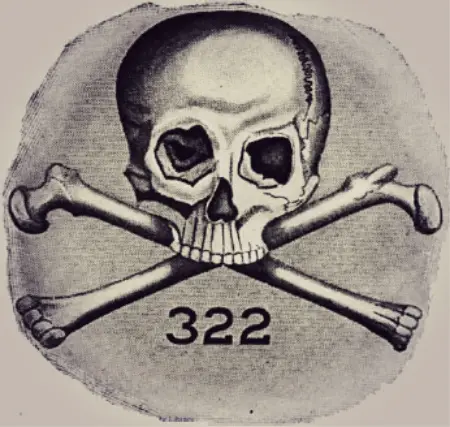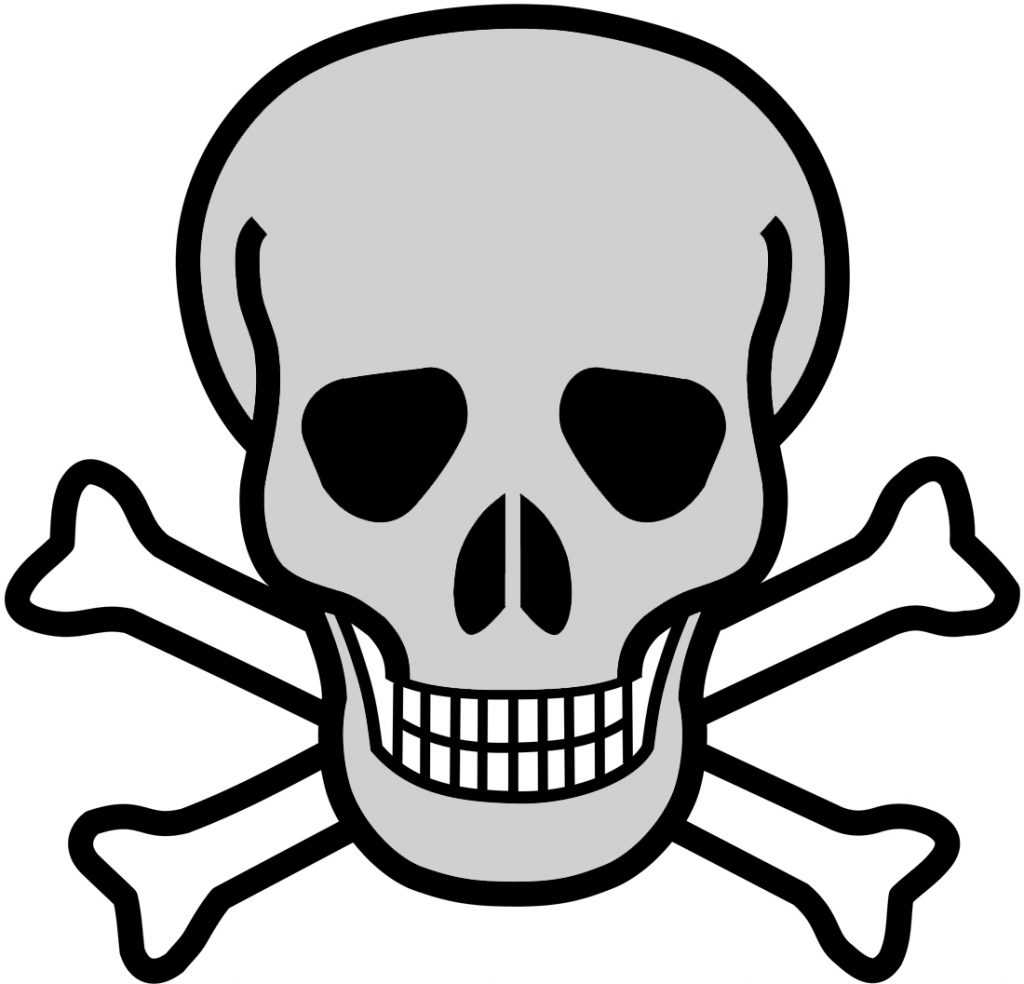A Symbol of sacrifice, poison, danger, death, bravery, toughness, ferocity, warning, and victory.
The skull and bones symbol consists of a human skull with two long bones crossed beneath.
Ancient Mayans used the symbol on altars where sacrifices were made. The skull and bone symbol was also used to portray deities and supernatural beings. The Cemetery Group in Uxmal has a skull and crossbones on the walls. The Cemetery Group was not a cemetery; it was a temple.

There are beliefs that the modern skull and bones symbol came from Ancient Egypt, where pharaoh’s tombs would have the pharaoh carved in the top with two crossing sceptres beneath.
This symbol was used as a symbol of death around 1200 A.D. It was used as a memento mori, an artistic reminder of death, on tombstones during that time. The skull and crossbones symbol was developed from Danse Macabre symbolism originating in France.
The skull and bones symbol was associated with pirates from the 14th century onwards. With the decline of pirates, some military vessels used the skull and crossbones flags, also known as the Jolly Roger, to show their toughness and ferocity. The Royal Navy Submarine Service now uses the Jolly Roger as its official emblem. The United States Marine Corps also uses the skull and bones as emblems. The Kuperjanov Battalion of the Estonian army uses the skull and bones as a symbol. Many divisions of the British Army also use the skull and bones on parts of their uniforms. The White Kornilov Division had skull and bone patches during the Russian Civil War. During World War I, some pilots used the skull and bone insignia on their airplanes. The skull and bone symbol was also used by Nazi troops during World War II.
In the 1850s in New York, the skull and bones symbol was first used on medication to show danger or death. In Northern Europe, the skull and bones were used on rosaries and large wall hangings. It symbolized memento mori and, later, the victory of Christ over death.

Different teams have used the skull and bones symbol. Rugby teams in Great Britain started using the skull and bones symbol in the 1870s. The skull and bones symbolize the danger of the sport and rebellion. The Raiders, a football team in the United States, use a twist on the skull and bones symbol on their uniforms to warn other teams of the danger of playing against them. Many different types of sporting teams in the United States that are called the Pirates use the skull and bones symbol.
Many fraternal and secret societies use the skull and bones as a motif. One of the most well-known examples of this is the Yale University secret society called Skull and Bones. The Knights Templar also uses skulls and bones as a motif. Within these societies, the skull and bones symbolize mortality and a warning to keep the society’s secrets. The Knights Templar skull and bones symbolize Golgotha, where Christ was crucified.
Modern-day use of the skull and bones is to depict poison on bottles. It is also used by heavy metal and punk bands, sports teams, and the military.
Symbols Menu:» Amulet
» Ajna
» Arsenic
» Merkaba
» Hung
» Yin Yang
» bindi
» IK Onkar
» Khanda
» Halo
» jiahu
» Tau
» Uraeus
» Menorah
» Quincunx
» Tilaka
» Taijitu
» Vajra
» Chai
» Chi Rho
» Bagua
» Dragon
» Hunab Ku
» Caduceus
» Infinity
» Ichthus
» Hedjet
» Lauburu
» Om
» Ankh
» Chalice
» Pentacle
» Maat
» Ogham
» Mandala
» Kartika
» Khamsa
» Heart
» Labrys
» Sun Face
» Raven
» Triskele
» Scarab
» Dove
» Hanukia
» Anubis
» Trishula
» Durga
» Mezuzah
» Bay Tree
» Geruda
» Kinnara
» Quito
» Condor
» Blue Jay
» Falcon
» Makara
» Rosary
» Uluru
» Apsaras
» Hanuman
» Serpent
» Minotaur
» Mercury
» Apex
» Vestra
» Yoni
» Astarte
» dakini
» Calabash
» Mandrake
» Rebis
» Typhon
» Vegvísir
